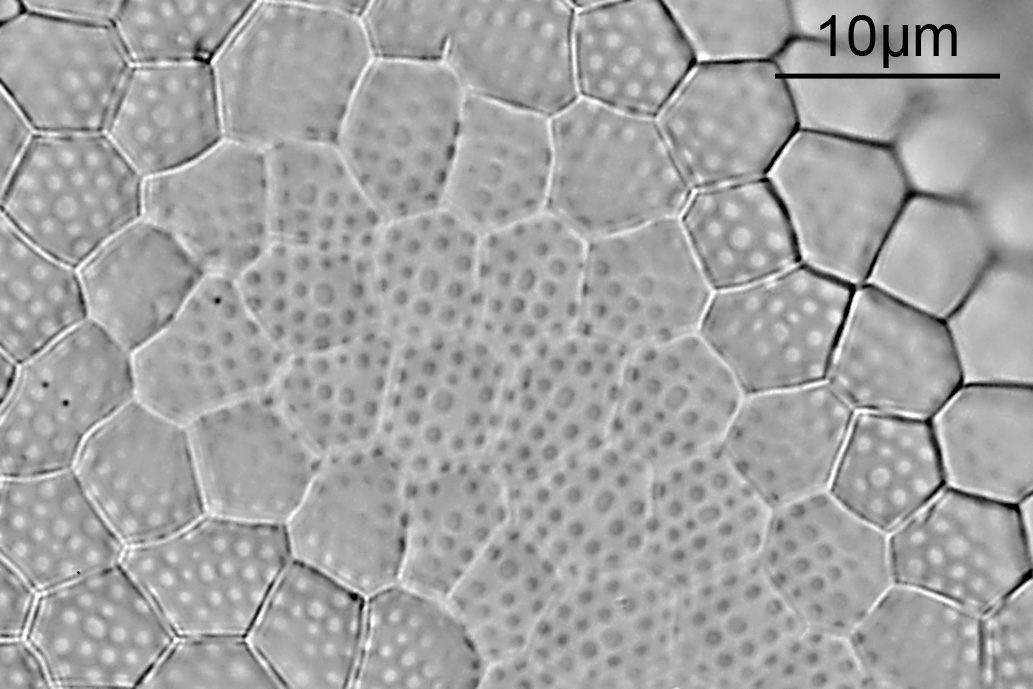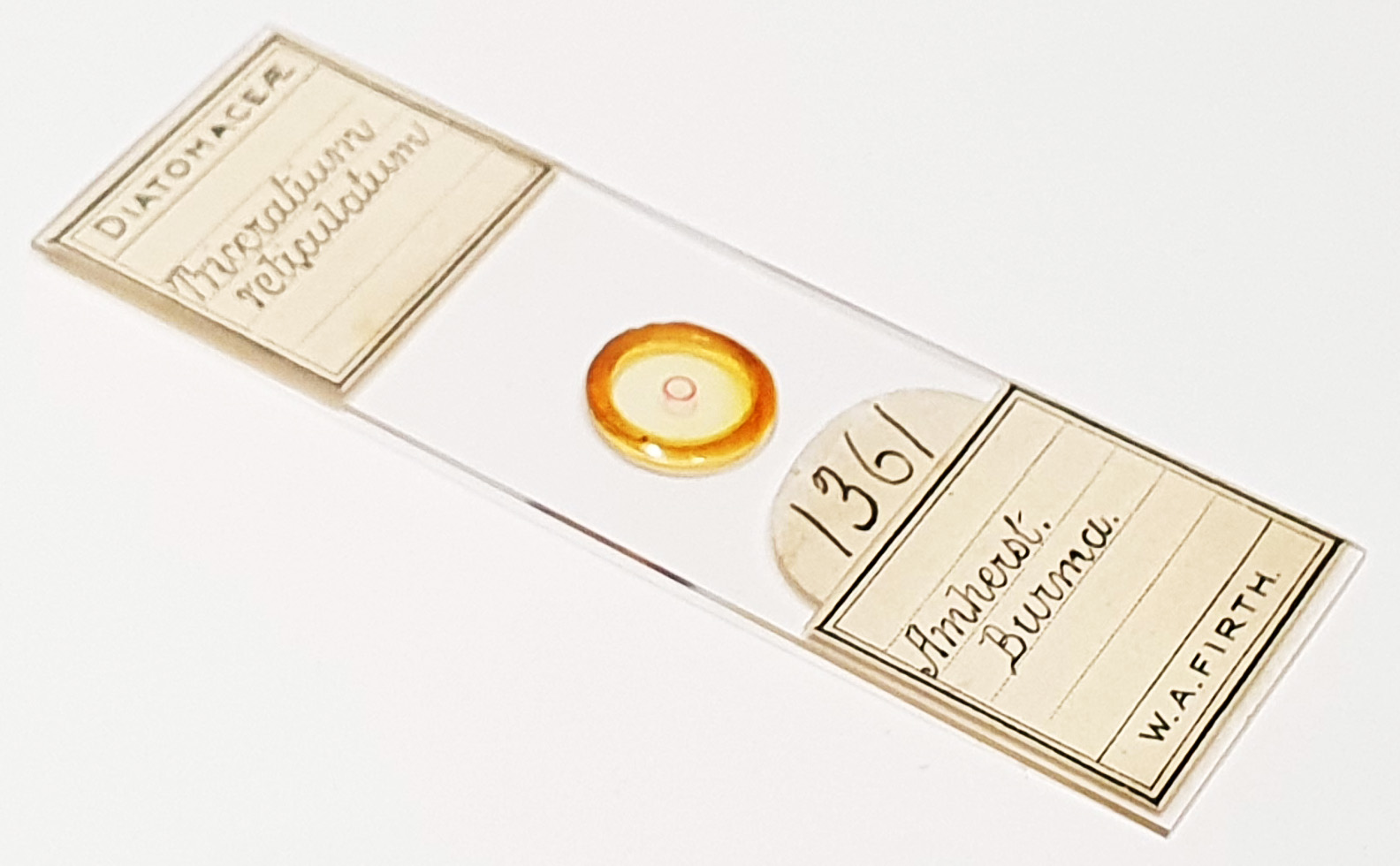



An arrangement of four Triceratium reticulatum ? from Amherst, Burma (now Kyaikkhami, Myanmar). I’ll come back to the name later. Prepared by WA Firth. Olympus BHB microscope using 450nm LED light. 40x Leitz Pl Apo NA 1.00 objective, oil immersion. Olympus Aplanat Achromat condenser, oil immersion, brightfield lighting. 2.5x Nikon CF PL photoeyepiece. Monochrome converted Nikon d850 camera. 47 images stacked in Zerene (Pmax). Some of the details were lost in stacking, as can be seen from the crop of one of the original images, so I may return to this one and try a different approach to stacking it.
So, the name and why did I put a question mark after it. T. reticulatum is mentioned in Greville, R.K. (1865). Descriptions of new and rare Diatoms. Series XVII. Transactions of the Microscopical Society, New Series, London, 13: 97-105, pls. VIII & IX. However the image is a 6 lobed diatom from Barbados. T. reticulatum is not mentioned in Schmidt’s Atlas, however on Plate 150, Fig 10 there is one labelled as ‘Oamaru, new species’ which looks very much like this. These ones look a little like T. radioso-reticulatum from Oamaru and Barbados (Schmidt’s Atlas, Plate 151, Figs 35,36). However these don’t look like other examples of T. radiosoreticulatum I have seen. The structures at the ends of the diatoms on this slide don’t even look like a Triceratium to me. All very mysterious, but what ever they are, they are very pretty diatoms.